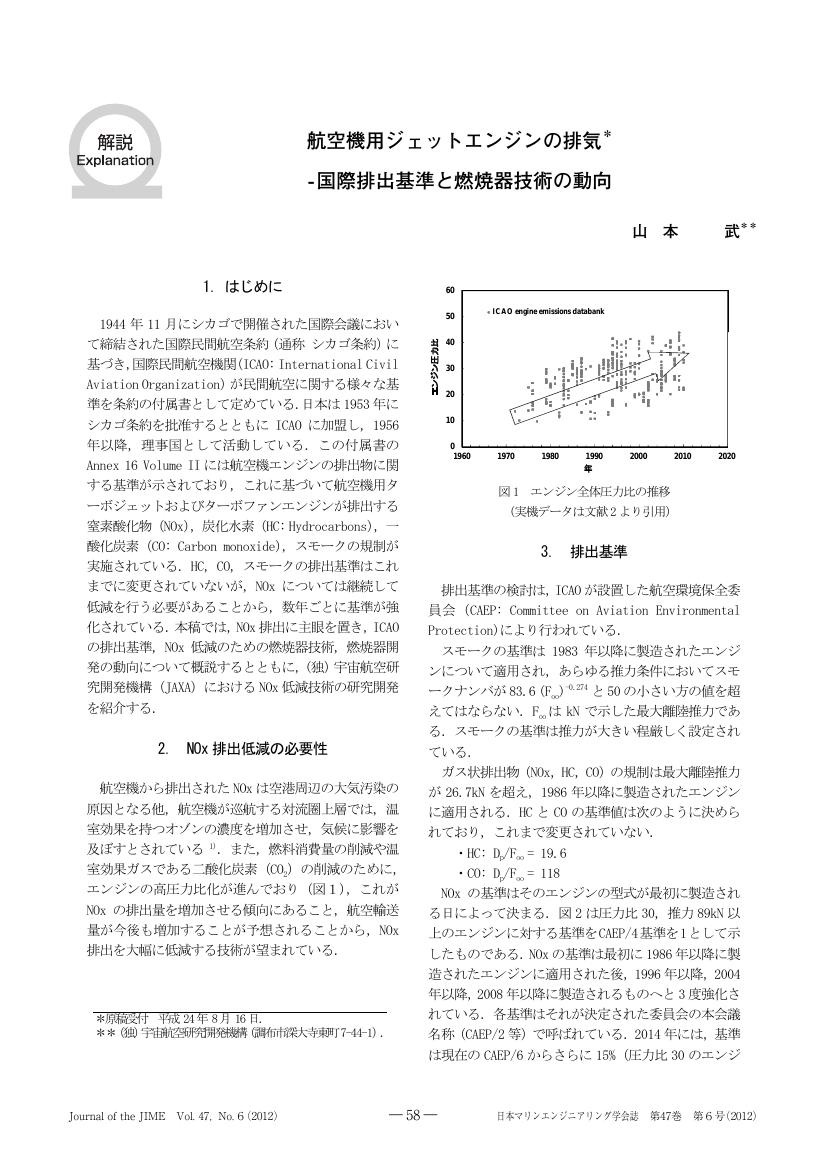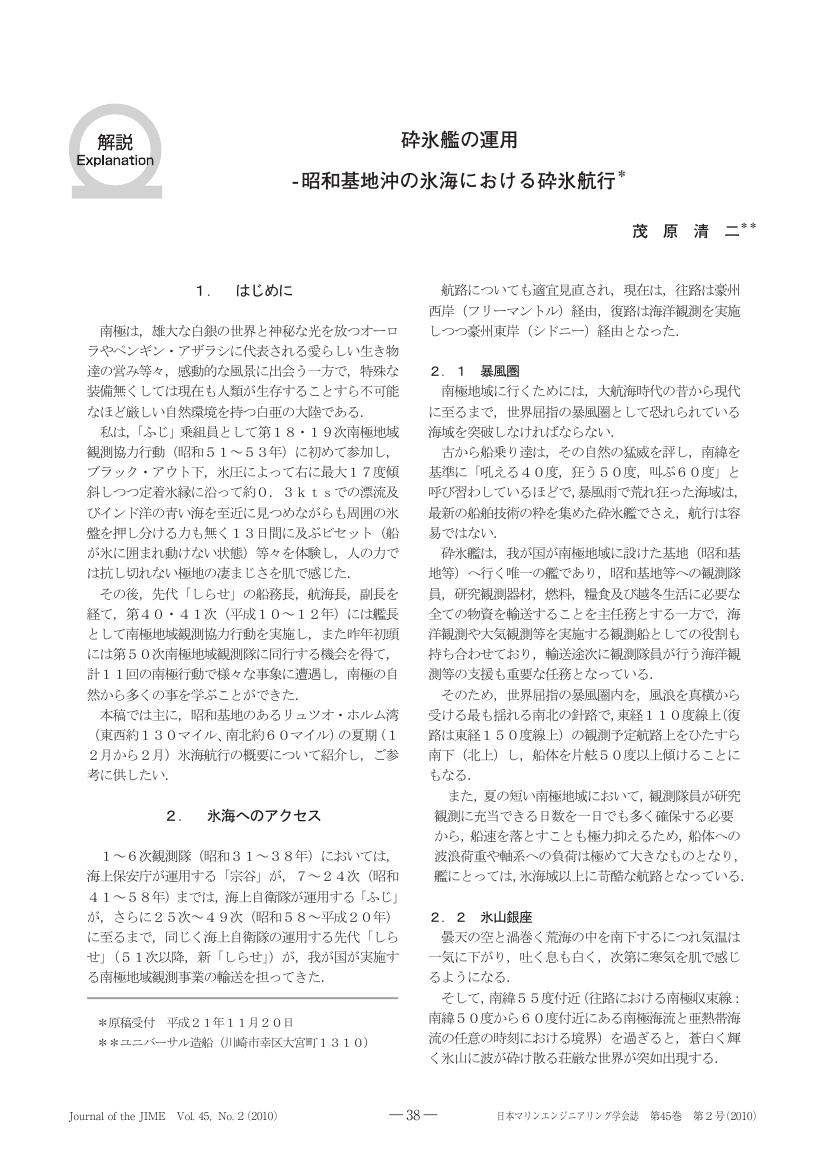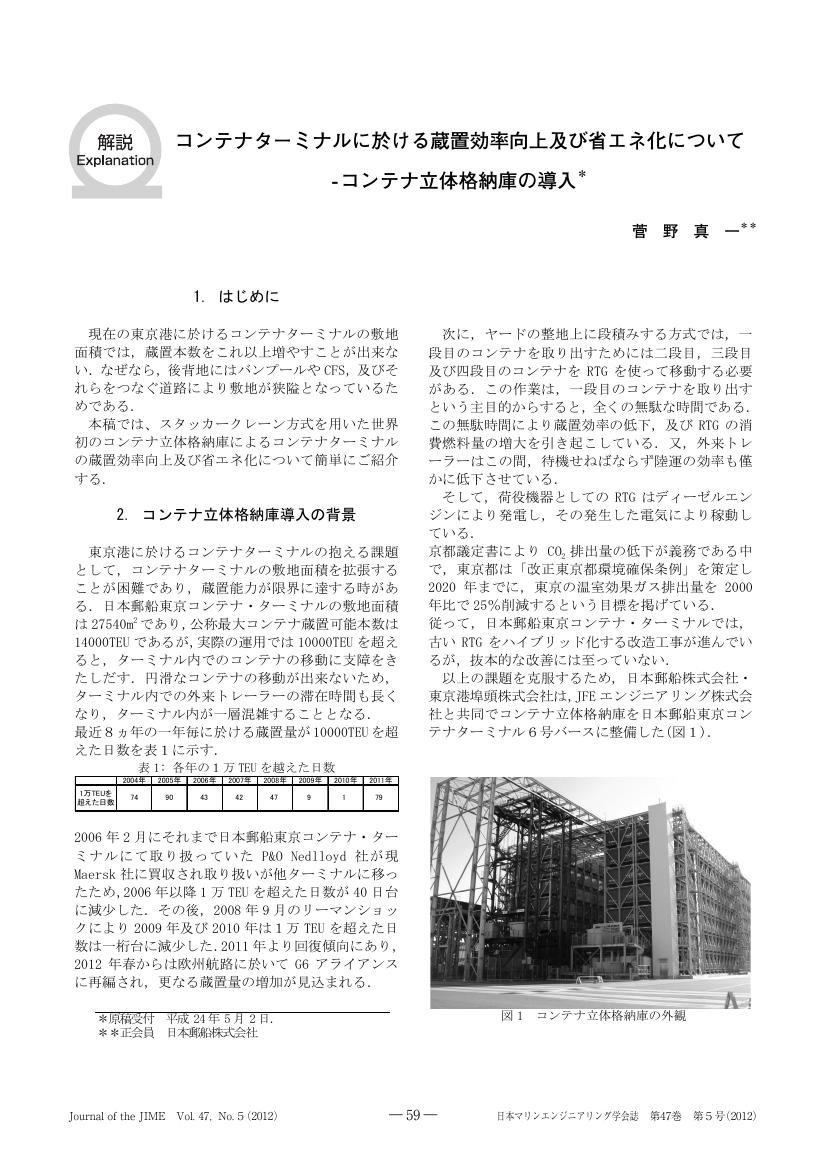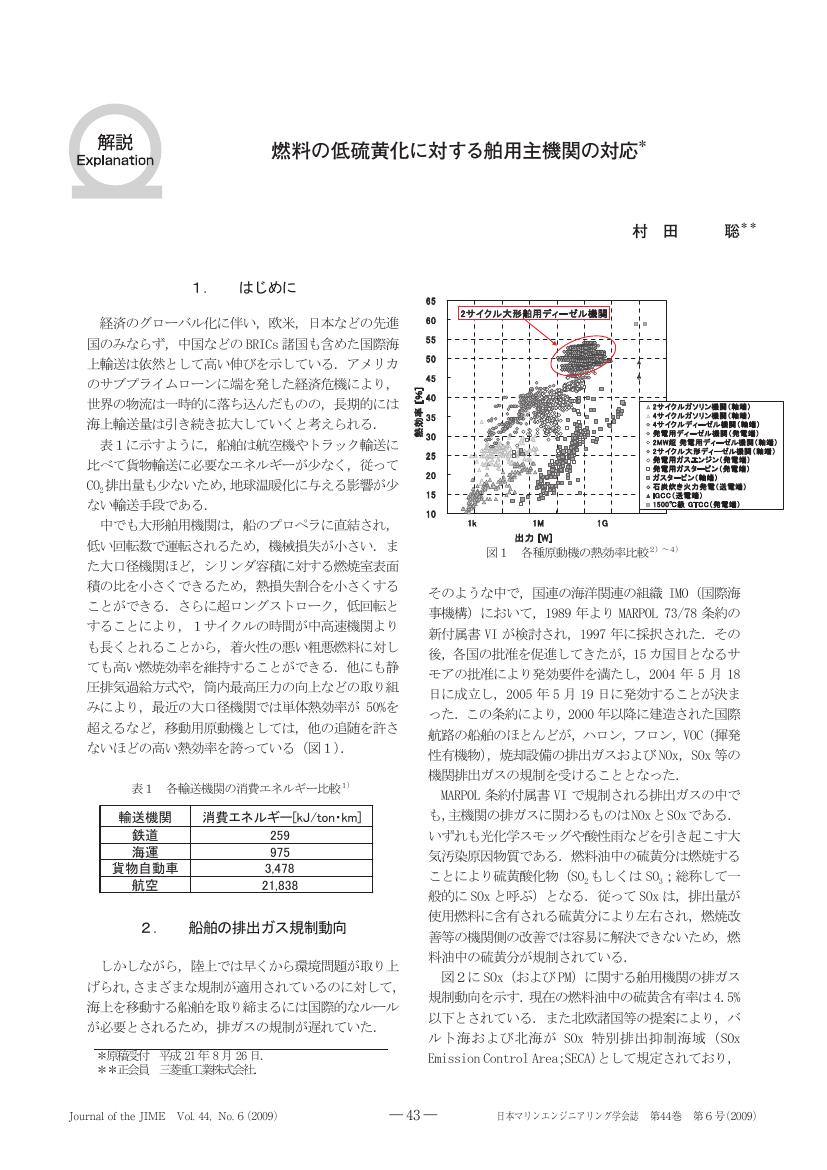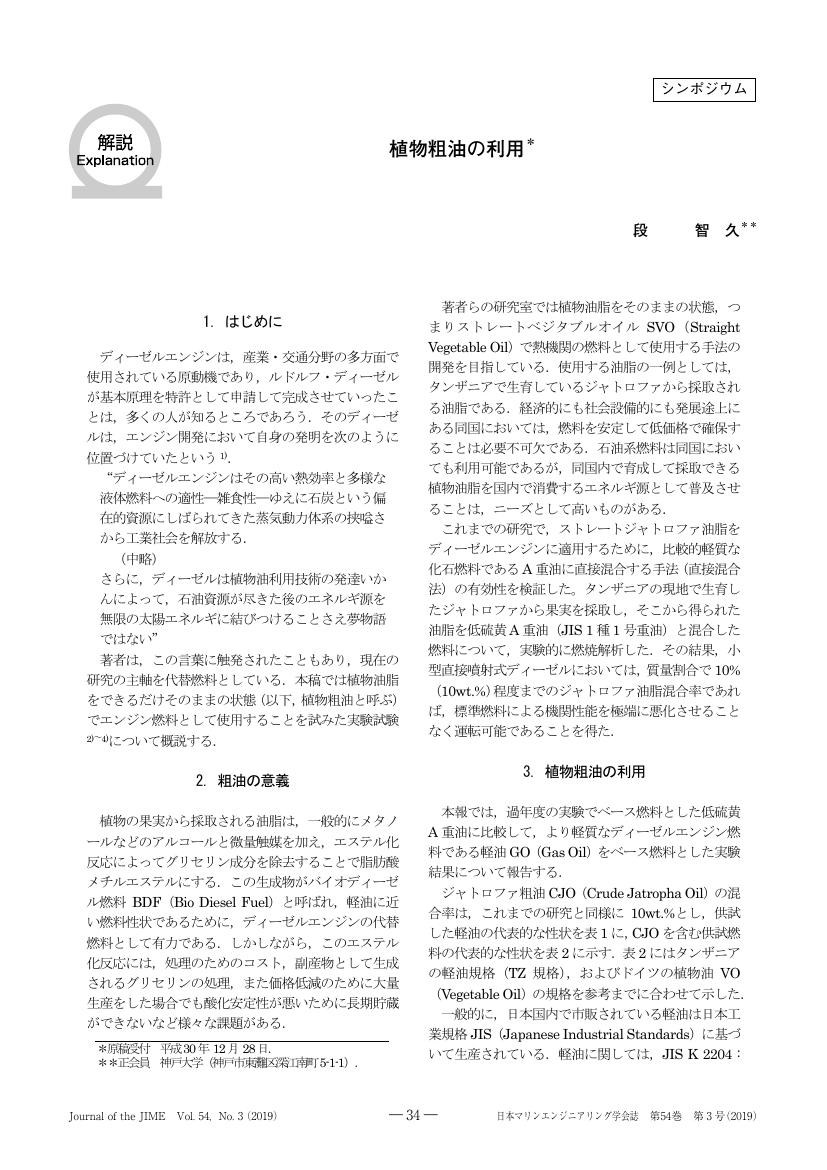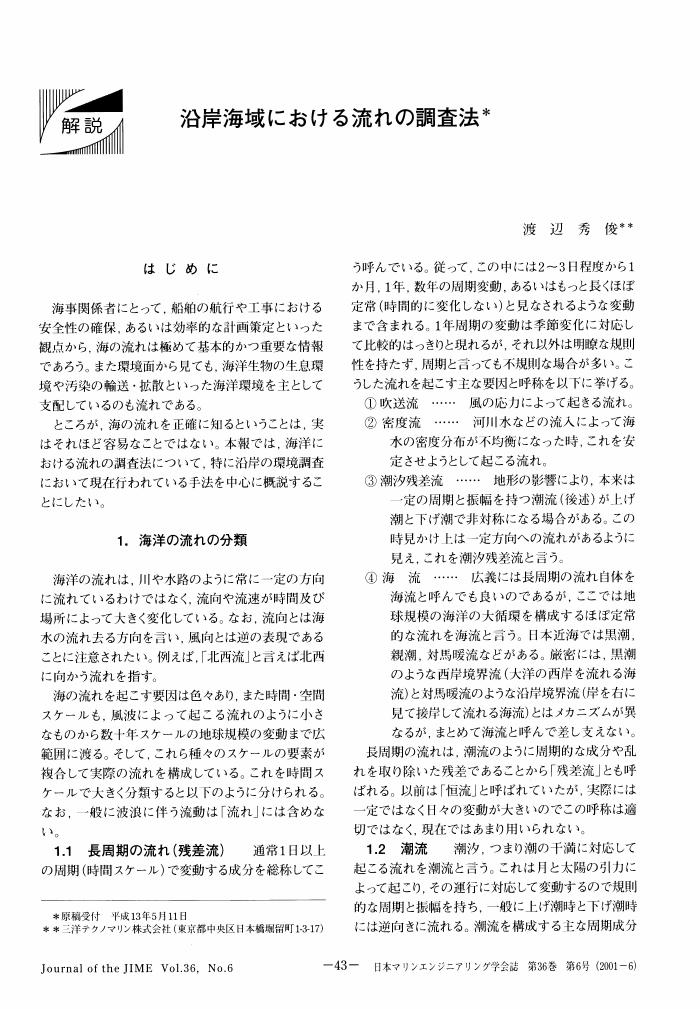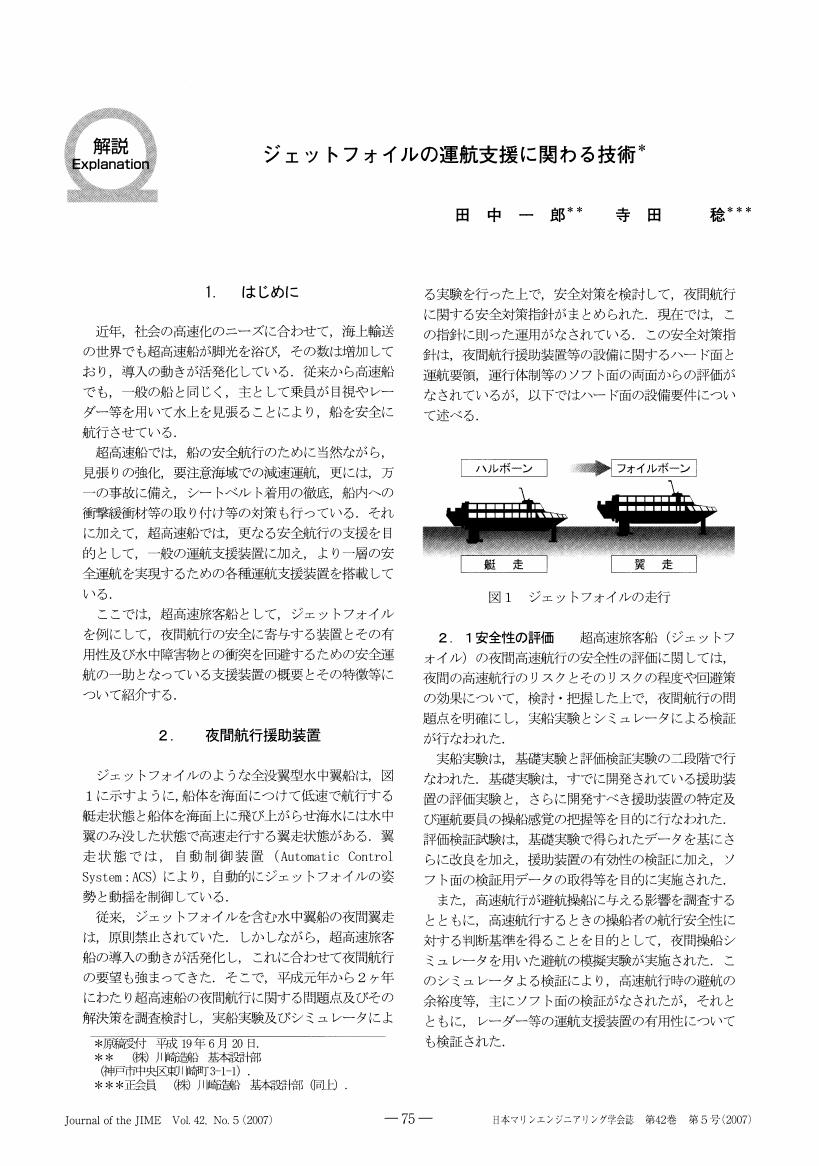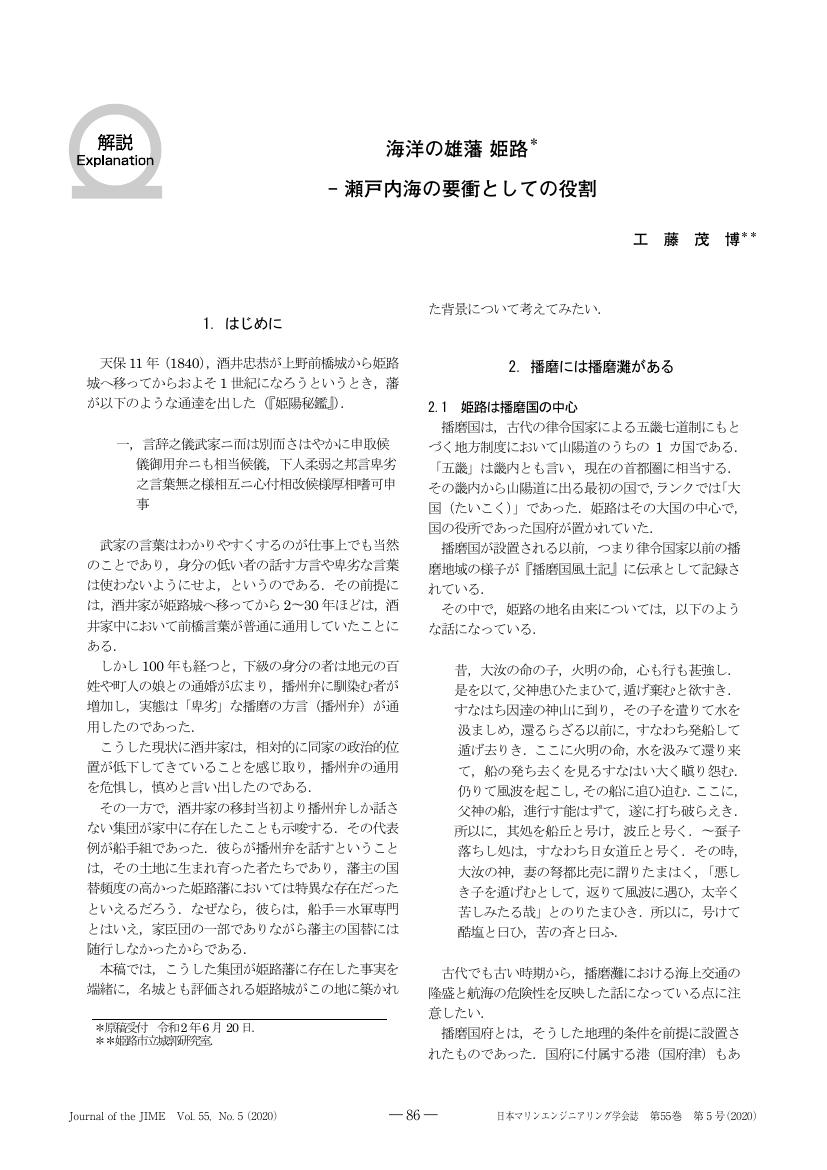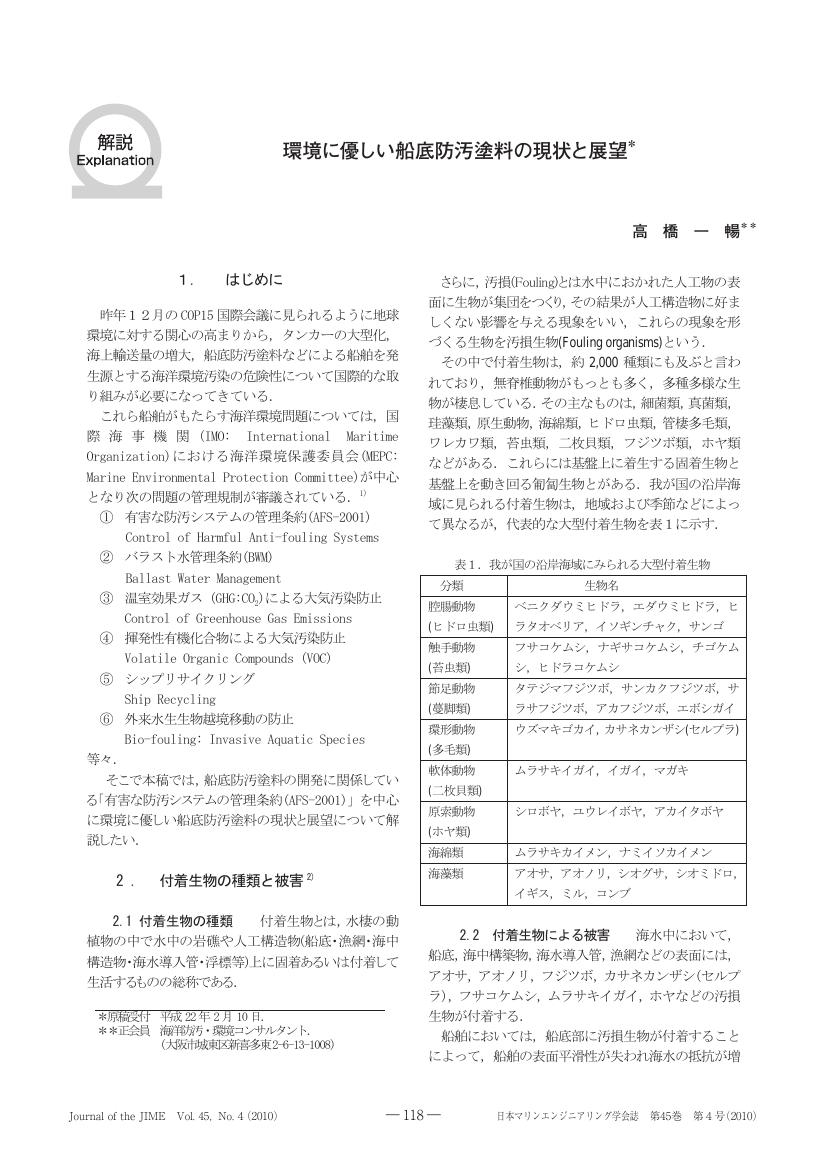3 0 0 0 OA 福島第一原子力発電所事故要因の考察
- 著者
- 金子 仁
- 出版者
- 公益社団法人 日本マリンエンジニアリング学会
- 雑誌
- マリンエンジニアリング (ISSN:13461427)
- 巻号頁・発行日
- vol.48, no.2, pp.181-186, 2013-03-01 (Released:2014-03-10)
- 参考文献数
- 7
3 0 0 0 OA 航空機の機体開発におけるCFDの活用について
- 著者
- 今村 太郎
- 出版者
- 公益社団法人 日本マリンエンジニアリング学会
- 雑誌
- マリンエンジニアリング (ISSN:13461427)
- 巻号頁・発行日
- vol.48, no.5, pp.618-622, 2013-09-01 (Released:2014-09-02)
- 参考文献数
- 22
3 0 0 0 OA 航空機用ジェットエンジンの排気 -国際排出基準と燃焼器技術の動向
- 著者
- 山本 武
- 出版者
- 公益社団法人 日本マリンエンジニアリング学会
- 雑誌
- マリンエンジニアリング (ISSN:13461427)
- 巻号頁・発行日
- vol.47, no.6, pp.835-840, 2012-11-01 (Released:2013-12-26)
- 参考文献数
- 9
3 0 0 0 OA 砕氷艦の運用 - 昭和基地沖の氷海における砕氷航行
- 著者
- 茂原 清二
- 出版者
- 公益社団法人 日本マリンエンジニアリング学会
- 雑誌
- マリンエンジニアリング (ISSN:13461427)
- 巻号頁・発行日
- vol.45, no.2, pp.186-191, 2010 (Released:2012-12-06)
3 0 0 0 OA 南極観測艦 新「しらせ」特集号によせて
- 著者
- 藤谷 克昭
- 出版者
- 公益社団法人 日本マリンエンジニアリング学会
- 雑誌
- マリンエンジニアリング (ISSN:13461427)
- 巻号頁・発行日
- vol.45, no.2, pp.179-179, 2010 (Released:2012-12-06)
3 0 0 0 OA 波力発電の研究開発の現状
- 著者
- 永田 修一
- 出版者
- 公益社団法人 日本マリンエンジニアリング学会
- 雑誌
- マリンエンジニアリング (ISSN:13461427)
- 巻号頁・発行日
- vol.47, no.4, pp.585-590, 2012-07-01 (Released:2013-12-20)
- 参考文献数
- 35
- 被引用文献数
- 1
3 0 0 0 OA 国内最大クラス クルーズフェリー新“いしかり”の紹介
- 著者
- 林 洋一郎 恩塚 政憲
- 出版者
- 公益社団法人 日本マリンエンジニアリング学会
- 雑誌
- マリンエンジニアリング (ISSN:13461427)
- 巻号頁・発行日
- vol.47, no.2, pp.219-222, 2012-03-01 (Released:2013-10-30)
3 0 0 0 OA クルーズ客船,フェリーを取り巻く環境
- 著者
- 池田 良穂
- 出版者
- 公益社団法人 日本マリンエンジニアリング学会
- 雑誌
- マリンエンジニアリング (ISSN:13461427)
- 巻号頁・発行日
- vol.47, no.2, pp.197-202, 2012-03-01 (Released:2013-10-30)
- 参考文献数
- 3
3 0 0 0 OA 2003年におけるマリンエンジニアリング技術の進歩
- 出版者
- 公益社団法人 日本マリンエンジニアリング学会
- 雑誌
- マリンエンジニアリング (ISSN:13461427)
- 巻号頁・発行日
- vol.39, no.7-8, pp.429-464, 2004-07-01 (Released:2010-05-31)
2 0 0 0 OA コンテナターミナルに於ける蔵置効率向上及び省エネ化について -コンテナ立体格納庫の導入
- 著者
- 菅野 真一
- 出版者
- 公益社団法人 日本マリンエンジニアリング学会
- 雑誌
- マリンエンジニアリング (ISSN:13461427)
- 巻号頁・発行日
- vol.47, no.5, pp.693-695, 2012-09-01 (Released:2013-12-21)
2 0 0 0 OA 空気マイクロバブルを利用した船底の防汚対策 - 流水実験による効果の紹介
- 著者
- 塩田 浩太
- 出版者
- 公益社団法人 日本マリンエンジニアリング学会
- 雑誌
- マリンエンジニアリング (ISSN:13461427)
- 巻号頁・発行日
- vol.47, no.5, pp.675-678, 2012-09-01 (Released:2013-12-21)
- 参考文献数
- 5
- 被引用文献数
- 1
2 0 0 0 OA 燃料の低硫黄化に対する舶用主機関の対応
- 著者
- 村田 聡
- 出版者
- 公益社団法人 日本マリンエンジニアリング学会
- 雑誌
- マリンエンジニアリング (ISSN:13461427)
- 巻号頁・発行日
- vol.44, no.6, pp.894-898, 2009 (Released:2012-10-25)
- 参考文献数
- 12
2 0 0 0 OA 植物粗油の利用
- 著者
- 段 智久
- 出版者
- 公益社団法人 日本マリンエンジニアリング学会
- 雑誌
- マリンエンジニアリング (ISSN:13461427)
- 巻号頁・発行日
- vol.54, no.3, pp.350-357, 2019-05-01 (Released:2019-05-30)
- 参考文献数
- 7
2 0 0 0 OA 液化ジメチルエーテル混合による高粘度難燃性物質の燃焼特性
- 著者
- 三原 悠 浅野 一朗 段 智久 岡村 秀雄 松村 千里 羽賀 雄紀 中坪 良平
- 出版者
- 公益社団法人 日本マリンエンジニアリング学会
- 雑誌
- マリンエンジニアリング (ISSN:13461427)
- 巻号頁・発行日
- vol.56, no.3, pp.473-483, 2021-05-01 (Released:2021-06-02)
- 参考文献数
- 29
As a way to improve the combustion characteristics of wood tar which is highly viscous and flame retardant, the authors blended it with liquefied dimethyl ether (DME), which can improve fuel fluidity, ignitability and spray atomization. Moreover, heavy fuel oil (bunker-c oil) was added to increase the heating value of this fuel sample. The sample, which has the blending ratio of 35 % wood tar, 30% DME and 35% bunker-c by weight, was used in a combustion test with a three-cylinder in-direct injection diesel engine. Additionally, the authors also investigated particulate matter (PM) produced after burning four samples that mixed liquefied DME with flame retardant fuels in the same engine to analyze its environmental and biological impacts. The four samples prepared for the experiment were (1) 70% distillate oil (bunker-a) and 30% DME; (2) 85% bunker-c and 15% DME; (3) 70% bunker-c and 30% DME; (4) 35 % bunker-c, 30% DME and 35% wood tar. The results of the engine test suggested the possibility that wood tar could become more combustible by optimizing the flow rate of fuel and the blend ratio of liquefied DME and bunker-c. In the (4) case, PM showed no high mutagenic potentials and there were lower concentrations of such inorganic substances as vanadium and nickel. Polycyclic aromatic hydrocarbons (PAHs) concentrations in PM decreased by blending liquefied DME with bunker-c, whereas did not decrease for the wood tar.
2 0 0 0 OA 沿岸海域における流れの調査法
- 著者
- 渡辺 秀俊
- 出版者
- 公益社団法人 日本マリンエンジニアリング学会
- 雑誌
- マリンエンジニアリング (ISSN:13461427)
- 巻号頁・発行日
- vol.36, no.6, pp.417-424, 2001-06-01 (Released:2010-05-31)
- 参考文献数
- 8
2 0 0 0 OA ヤンマー6HY-ET形ディーゼル機関の開発
- 著者
- 伊藤 壽彦
- 出版者
- 公益社団法人 日本マリンエンジニアリング学会
- 雑誌
- マリンエンジニアリング (ISSN:13461427)
- 巻号頁・発行日
- vol.40, no.3, pp.349-353, 2005-05-01 (Released:2010-05-31)
- 参考文献数
- 3
2 0 0 0 OA 超微細気泡混入軽油によるディーゼル機関の環境負荷低減
- 著者
- 中武 靖仁
- 出版者
- 公益社団法人 日本マリンエンジニアリング学会
- 雑誌
- マリンエンジニアリング (ISSN:13461427)
- 巻号頁・発行日
- vol.46, no.6, pp.880-885, 2011 (Released:2013-10-23)
- 参考文献数
- 9
- 被引用文献数
- 3 3
2 0 0 0 OA ジェットフォイルの運航支援に関わる技術
- 著者
- 田中 一郎 寺田 稔
- 出版者
- 公益社団法人 日本マリンエンジニアリング学会
- 雑誌
- マリンエンジニアリング (ISSN:13461427)
- 巻号頁・発行日
- vol.42, no.5, pp.836-840, 2007-09-01 (Released:2010-05-31)
- 参考文献数
- 2
2 0 0 0 OA 海洋の雄藩 姫路 - 瀬戸内海の要衝としての役割
- 著者
- 工藤 茂博
- 出版者
- 公益社団法人 日本マリンエンジニアリング学会
- 雑誌
- マリンエンジニアリング (ISSN:13461427)
- 巻号頁・発行日
- vol.55, no.5, pp.628-631, 2020-09-01 (Released:2020-09-24)
2 0 0 0 OA 環境に優しい船底防汚塗料の現状と展望
- 著者
- 高橋 一暢
- 出版者
- 公益社団法人 日本マリンエンジニアリング学会
- 雑誌
- マリンエンジニアリング (ISSN:13461427)
- 巻号頁・発行日
- vol.45, no.4, pp.555-560, 2010 (Released:2013-03-09)
- 参考文献数
- 17
- 被引用文献数
- 1 2


